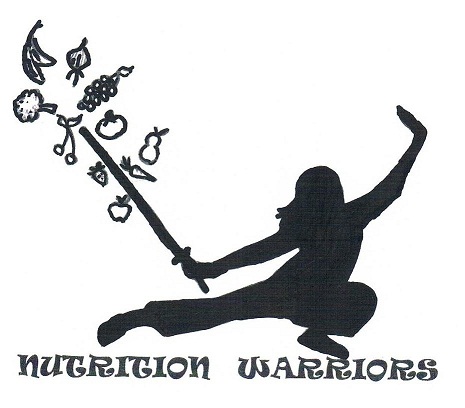A brain aneurysm (AN-u-rizm) is a bulge or ballooning in a blood vessel in the brain. Most brain aneurysms, however, don’t rupture, create health problems or cause symptoms. I have come up with a list of foods that will keep your brain healthy and just great foods to eat that will help your body heal . These foods should be consumed everyday and everyone can benefit from it.
Let start with the best food, Blueberries! Blueberries are the brain berry. They are the super food for the brain. Blueberries are an antioxidant and anti-inflammatory. But what makes them one of the best foods for the brain. Blueberries help the neurons in your brain communicate with one another better. Anti oxidants are important for optimal health. Vitamins A, C, and E are known for their antioxidant activity. These foods are the richest in disease-fighting antioxidants; they include cherries, apples, oranges, grapefruit, tomatoes, spinach, kale, Brussels sprouts, strawberries, blueberries, grapes, oranges, pineapple, peppers, parsley, spinach, dried fruits and nuts and seeds. Strawberries are also known to help benefit the brain function.
60% of your brain is fat so eating a diet high in omega 3 is very important to protect your brain. To enhance heart health and overall wellness, consume fatty fish, such as salmon or tuna, regularly as they contain omega-3 fatty acids. Omega-3 fatty acids also help the brain to repair cellular damage. This nutrient is found in salmon, walnuts, kiwifruit, flaxseed, olive oil, soybeans, navy beans, chia seeds and kidney beans.
According to the Mayo Clinic, whole grains are great for a heart-healthy diet and aid in blood pressure management, which will help prevent a recurrence of brain aneurysm. Incorporate a variety of nutritious whole grains such as whole wheat, bulgur, spelt, barley, oats, rye, wild rice, brown rice and popcorn into your diet on a daily basis to reap the most benefits.
The Mayo Clinic suggests lean protein foods, such as legumes, tofu, skinless poultry and low-fat dairy products, as an important part of a heart healthy diet. Limit intake of fatty red meat, whole milk and deep-fried foods as they provide saturated fats, which increase risk for heart attack and stroke. These are diet guidelines that everyone should be following no matter what their health or age.
Eat foods high in vitamin D, including milk, salmon, mackerel and sardines.
Foods rich in vitamin E, including, sunflower seeds, olive and soybean oils, as well as almonds, peanuts, hazelnuts and spinach
Foods rich in vitamin C include orange and grapefruit fruits and juices, tomatoes, strawberries, and red bell peppers.
The body uses B-complex vitamins to nourish the nervous system. Foods that are high in B-vitamins are usually high in protein as well. These foods include whole-grain cereals, red meat, egg yolks, brown rice, cheese, fish, peanuts, soybeans, chicken and dairy products.
Eat foods that are high in flavonoids. That includes red, blue, and purple berries; red grapes; red wine; black, oolong, green and white tea; chocolate; apples; citrus fruits and juices such as oranges, lemons, and grapefruit; yellow onions, scallions; kale; broccoli; celery; hot peppers and the spices parsley and thyme.
A great way to get these foods into your everyday day diet is juicing or smoothies.
Bananas are high in antioxidants, dopamine and serotonin. Dopamine boosts memory and attention while serotonin elevates mood and helps control appetite, memory and learning. Blueberries contain pigments called anthocyanins that give the fruit its dark color and also boost brain function. They also help protect the brain from stress and may reduce dementia. Hemp nuts are rich in Omega-3′s which are essential for the health of your brain and nervous system. Additionally, the compounds found in hemp seeds have been shown to promote memory, learning and immune function. Apple juice prevents the loss of an important neurotransmitter called acetylcholine which is critical for memory and brain health. Rhodiola rosea extract improves mood, alleviates depression and can also improve sexual functioning and libido. It’s available for purchase in natural food stores.
Dr. Oz’s Brain-Boosting Smoothie
Ingredients
1 banana
1/4 cup blueberries
A handful of hemp nuts
1/2 cup apple juice
1 tsp rhodiola rosea
Put all ingredients in a blender mix and then enjoy!
Take some other fruits or vegetable from the lists above and come up with your own brain enhancing drink. Experiment with peanut butter, chia seeds, spinach, strawberries and almond milk.
The Mayo Clinic recommends; If you have an unruptured brain aneurysm, you may lower the risk of its rupture by making these lifestyle changes:
- Don’t smoke or use recreational drugs. If you smoke or use recreational drugs, talk to your doctor about strategies or an appropriate treatment program to help you quit.
- Eat a healthy diet and exercise. Changes in diet and exercise can help lower blood pressure. Talk to your doctor about changes appropriate for you.
- Limit caffeine. Caffeine is a stimulant that can cause a sudden increase in blood pressure.
- Avoid straining. Sudden, forceful and sustained exertion of the type you expend when you lift heavy weights can cause a sudden increase in blood pressure.
- Be cautious of aspirin use. Talk to your doctor before taking aspirin or other drugs that inhibit blood clotting, because they may increase blood loss if you do have a ruptured aneurysm.
 May 12th, 2012
May 12th, 2012 